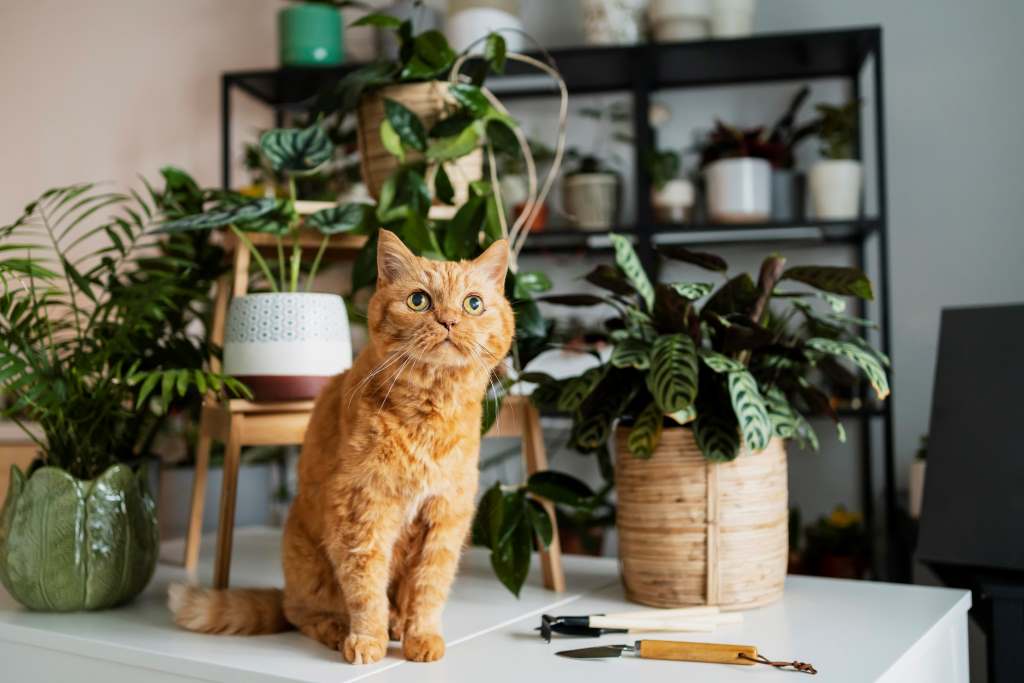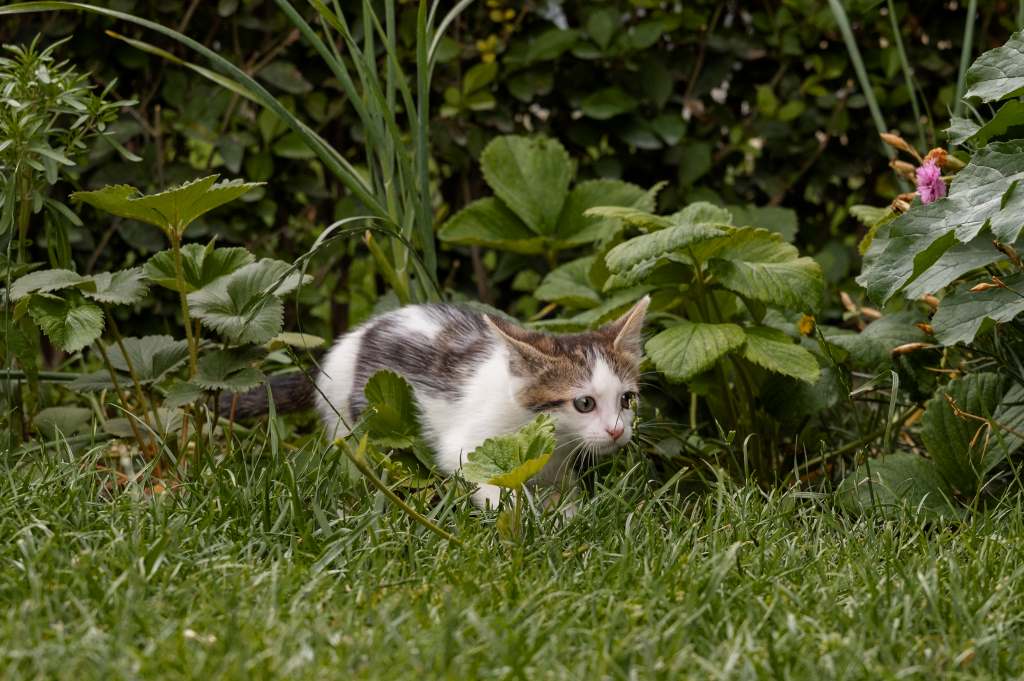
Fleas are a nightmare for pet owners. They make our furry friends itch and can invade our homes. However, pet-friendly plants that repel fleas offer a natural, safe solution. My dog, Max, once suffered from fleas, and chemical sprays worried me. Then, I discovered plants that keep fleas away while being safe for pets. This blog post shares a storytelling journey about these plants, blending personal experience with practical tips. You’ll learn which plants work, how to use them, and why they’re a game-changer. Let’s dive into this green solution to create a flea-free, pet-happy home.
Table of Contents
ToggleWhy Choose Plants to Repel Fleas?
Chemical flea treatments can harm pets and humans. Plants, however, are a natural alternative. They release scents or oils that fleas hate but are safe for your dog or cat. For example, my neighbor’s cat, Luna, had skin irritation from flea collars. Switching to plants like lavender helped her recover. Additionally, plants improve air quality and add beauty to your home. According to a 2023 study by the American Society for Horticulture Science, certain plants reduce pest populations by up to 40% in controlled settings. Therefore, choosing pet-friendly plants that repel fleas is effective and eco-friendly. You’ll save money and keep your pets safe.
Top Pet-Friendly Plants That Repel Fleas
Several plants repel fleas while being safe for pets. Below, I share the best options, their benefits, and how to use them. Each plant is easy to grow and maintain, even for beginners. My experience with these plants transformed Max’s life, and I’m excited to share them with you.
Lavender: The Fragrant Flea Repeller
Lavender’s calming scent repels fleas effectively. Its purple blooms add charm to gardens or indoor pots. I planted lavender near Max’s favorite nap spot, and fleas disappeared within weeks. Place lavender in sunny areas with well-drained soil. Water sparingly to avoid root rot. However, ensure pets don’t eat large amounts, as it may cause mild stomach upset. According to a 2022 study by Purdue University, lavender oil reduced flea activity by 35% in test environments. Thus, lavender is a top choice for pet owners seeking a natural solution.
Rosemary: A Culinary Herb with Flea-Fighting Power
Rosemary is a versatile herb that repels fleas with its strong aroma. I grow rosemary in my kitchen garden, and Max loves lounging nearby. Its needle-like leaves deter fleas, and it’s safe for pets in small doses. Plant rosemary in sunny spots with sandy soil. Use its sprigs in pet bedding or as a rinse after baths. However, overwatering can kill rosemary, so let the soil dry between watering. Rosemary’s dual use as a cooking herb and flea repeller makes it a practical choice for busy pet owners.
Lemongrass: The Citrusy Flea Deterrent
Lemongrass has a citrus scent that fleas avoid. I added lemongrass to my patio, and it worked wonders for Max. This plant thrives in warm climates and needs full sun. Its tall stalks are perfect for outdoor spaces. You can crush leaves to release oils and rub them on pet bedding. However, lemongrass can be toxic if pets eat it, so keep it out of reach. Regular pruning keeps it manageable. Lemongrass is ideal for pet owners wanting a tropical vibe with flea-repelling benefits.
Mint: A Refreshing Flea Repellent
Mint’s strong scent drives fleas away. I grow peppermint in pots to prevent it from spreading. Max’s flea issues reduced after I placed mint near his bed. Mint needs partial shade and moist soil. Sprinkle dried mint leaves in pet areas for extra protection. However, too much mint can upset a pet’s stomach, so use it sparingly. Its fast growth requires regular trimming. Mint is perfect for pet owners seeking an easy-to-grow plant with multiple uses.
How to Use These Plants Effectively
Using pet-friendly plants that repel fleas is simple. Place them in areas where pets spend time, like near beds or in gardens. For example, I scatter lavender buds in Max’s crate, and fleas stay away. You can also make natural sprays by steeping plant leaves in water. Apply these to pet bedding or furniture. Additionally, combine plants for stronger effects. For instance, lavender and rosemary together create a powerful barrier. Ensure proper plant care, like adequate sunlight and watering, to maintain their flea-repelling properties. Always monitor pets for reactions when introducing new plants.
Benefits of Using Pet-Friendly Plants
Pet-friendly plants that repel fleas offer many advantages. Here are some key benefits:
- Safe for Pets: Unlike chemicals, these plants are non-toxic when used correctly.
- Eco-Friendly: Plants reduce reliance on harmful pesticides.
- Cost-Effective: Growing plants is cheaper than buying flea treatments.
- Aesthetic Appeal: Plants enhance your home’s beauty.
- Air Purification: Many plants improve indoor air quality.
- Dual Purpose: Herbs like rosemary can be used in cooking.
These benefits make plants a smart choice for pet owners. My home feels fresher, and Max is happier without fleas.
Common Mistakes to Avoid
Using plants to repel fleas is effective, but mistakes can reduce their impact. Here are common errors to avoid:
- Overwatering Plants: Too much water harms plants like rosemary.
- Placing Plants in Wrong Spots: Lavender needs sun, not shade.
- Letting Pets Eat Plants: Some plants cause stomach issues if ingested.
- Ignoring Plant Maintenance: Pruning mint prevents overgrowth.
- Using Too Few Plants: Combine multiple plants for better results.
- Not Checking Pet Reactions: Monitor pets for allergies.
Avoiding these mistakes ensures plants work effectively. I learned this after overwatering my rosemary, which nearly died.
Tips for Growing Pet-Friendly Plants
Growing these plants is easy with the right approach. Here are some practical tips:
- Choose the Right Spot: Match plants to their light needs, like sun for lavender.
- Use Quality Soil: Well-draining soil prevents root rot.
- Water Wisely: Let soil dry between watering for most plants.
- Prune Regularly: Trim mint and lemongrass to control growth.
- Start Small: Begin with one or two plants to test effectiveness.
- Use Pots for Control: Pots prevent mint from spreading.
- Combine Plants: Pair lavender and rosemary for stronger flea protection.
These tips helped me create a thriving garden that keeps Max flea-free.
Potential Disadvantages
While pet-friendly plants are great, they have some downsides. Here are a few to consider:
- Time to Grow: Plants take weeks to mature and repel fleas.
- Pet Sensitivities: Some pets may have allergic reactions.
- Maintenance Needs: Plants require regular care.
- Limited Effect: Plants may not eliminate severe flea infestations.
- Space Requirements: Large plants like lemongrass need room.
- Toxicity Risk: Eating certain plants can cause mild issues.
Despite these drawbacks, plants remain a safe, natural option. I found combining plants with other methods works best for Max.
My Journey with Pet-Friendly Plants
When Max got fleas, I panicked. Chemical treatments seemed risky, and I wanted a safer option. After researching, I tried lavender and rosemary. Within a month, Max’s scratching stopped, and our home felt fresher. I placed mint near his bed and lemongrass on the patio. The results amazed me. My garden now doubles as a flea barrier, and Max is happier. This journey taught me that natural solutions can be powerful. If you’re struggling with fleas, try these plants. They’re easy to grow and make a big difference.
Conclusion
Pet-friendly plants that repel fleas are a natural, safe way to protect your pets and home. Lavender, rosemary, lemongrass, and mint offer effective solutions without harmful chemicals. My experience with Max proves these plants work. They’re easy to grow, eco-friendly, and beautiful. Start with one plant and watch the magic happen. Your pets will thank you, and your home will stay flea-free. Have you tried these plants? Share your story in the comments or spread the word by sharing this post. Let’s create happier, healthier homes for our pets together.
FAQs
What Are the Best Pet-Friendly Plants That Repel Fleas?
Lavender, rosemary, lemongrass, and mint are top choices. They’re safe and effective.
Can These Plants Harm My Pets?
In small amounts, they’re safe. Avoid letting pets eat large quantities.
How Long Do Plants Take to Repel Fleas?
Most plants start working within 2–4 weeks with proper placement.
Where Should I Place These Plants?
Put them near pet beds, gardens, or areas where pets rest.
Do These Plants Work for Severe Flea Infestations?
They help but may need to be combined with other treatments.

